Home ➜ Projects ➜ Is Mumbai Flooding?
The school projects and personal projects I have undertaken, as well as the research papers I have successfully completed.
Abstract
When we were first given the choice to research topics related to our city, Mumbai, it did not take us long to realize the most obvious problem all Mumbaikars face. The Mumbai monsoon season. This goes without saying that Mumbai has been a victim of horrible monsoon conditions, and regular floods that disrupt the lifestyle of tens of thousands of people. When we were pondering about why these monsoons have been so fatal for decades, a simple answer came to all our minds. The drainage systems. We figured that the drainage systems in Mumbai must be heavily undermaintained, and hence causing floods throughout Mumbai. And we cannot scale all of Mumbai to find our answers, so we chose Kandivali and Borivali to investigate.
After going through with the research, and the investigation, we came to a satisfying conclusion to our relatable research question. Although we did not use all our ways to collect data, looking at the time allotted, we still believe that the result of this research paper is conclusive and to the point. Although we could have done a bit more of the primary research, we still managed to make this an informative and eye-opening read. Our hypothesis was proven right.
Rationale
We want to pursue this research question because every year we see many people’s lives and families disrupted due to rain in parts of Mumbai, and we cannot help but wonder how we can safeguard those families from the floods.
The inefficiency of the drainage system has caused many major problems in Mumbai, like traffic during monsoon seasons, heavy loss of property and money, and the slight decline in the economy due to many people losing their workplaces. Hence, we concluded that we should contribute our time in solving this problem regarding some parts of Mumbai, specifically parts of Borivali and Kandivali.
An estimate of 100,000 people has been negatively affected due to rains in the monsoon season this year (2021), and 125 deaths have been recorded in Maharashtra. Plus, over 90,000 people were rescued due to the floods. The landslide caused by the floods trampled a small village called Taliye, killing 42 people. Constant power cuts had been going on throughout the season of monsoon in Maharashtra when the state received the heaviest rainfall in around 4 decades. Injuries and deaths were all recorded due to various lists of reasons like the collapse of a bridge, or a building, resulting in heavy loss of property. All this is caused by an inefficient drainage system.
Data Collection
- Experimentation – We feel that implementing our solution is the best way to find out if it is effective or not. And then our mistakes are also highlighted when we experiment with the solution. We plan to write detailed observations on the experiments and tests, which will be conducted before the end of the monsoon season but on an exceedingly small scale.
- Personal Interviews – There are people in Mumbai who have experienced the problem that we are discussing and have probable solutions to it. We intend on finding those people and collecting data. Experience is the best teacher.
- Expert Interviews – We intend to understand the problem by people who have thoroughly researched it, which will help us gain a fresh perspective on the problem and discover the underrated solutions towards it. Again, detailed observations will be made about the conversation that we have.
- Surveys – According to us, surveys are the best option to gain data, as we have a diverse group of people, who have experienced the problem, who will be giving us their opinion on the problem of the drainage system in Mumbai. We plan to spread-out the survey as far as possible to have more amounts of data; plus, observations will be made as we receive our responses.
Answers to Research
As mentioned in the Ways to collect Data segment, we used forms to get a wide array of opinions on our topic which helped form our analysis. And as expected, most of the people who responded to our form faced at least some amount of drainage problems one of the problems being filled gutters, and the majority also thought that the reason was more dependent on us Mumbaikars, the government, or the BMC who till now have not paid much attention to these flooding problems. Many people thought that due to everybody being careless about where they throw their garbage, the drains get blocked, and hence are not able to function as effectively.
1. Natural Barriers
Natural barriers such as hills, tree trunks, or holes can also help just like gutters and walls. Trees can also help catch rainfall and help take water from the soil which helps the road be dry and not filled with water making it easy to walk on the road as the gutters cannot always help in keeping the roads dry. Trees that fell can be used to block small streams and help push high levels of water, also keeping the amount of water which comes from rain collect there and not the roads.
2. Flood Barriers
Flood barriers are barriers that block water from flooding. They are man-made and have been used in many places such as The Thames and many more places. They are made from sturdy material and act like dams. Most of the time we use flood barriers because we can make them at multiple places and don’t need to depend on Natural barriers
3. Dredging Rivers
Dredging basically means removing silt (which consists of fine sand, clay, and small particles of rock) from the bottom of a pond/lake. This can increase the river’s capacity to hold the amount of water.
4. Larger Pipes
We can make the pipes larger so that it can accommodate space for sewer water and rainwater. This can ensure that more water can go through the drainage system and not overwhelm the drainage system. This large drainage system can also clear water quickly as it would not get clogged easily.
Countries affected by poor drainage systems
1. Nigeria
Flooding is the most common environmental hazard in Nigeria. Poor drainage systems cause flooding. disasters have occurred in Abuja), Osogbo, Yobe, and Akure. Coastal cities of Lagos, Port Harcourt, Calabar, Uyo, Warri among others have claimed that many lives were lost during the floods, and properties worth millions were destroyed. The flooding posed many environmental challenges. These challenges are associated with poor maintenance of the drainage system.
Nigeria’s government does not seem too concerned with the drainage problem as of right now, but they still have taken it seriously and made plans to improve it in the foreseen future. They intend to start making sustainable drainage, or Suds for short. Suds is one of those new-generation ideas to stop flooding, which can be seen as competent and working in the UK, one of the most well-known countries that uses Suds.
To be concise about what Suds are, they are just an urbanized way of what Nigeria tried to implement, which was directing the rainwater to water sources. This can be one solution that parts of Mumbai can implement to decrease flooding.
2. China
Several floods struck China starting in June 2021, most of them caused by heavy rainfalls in different areas. According to the World Meteorological Organization, such heavy rains are frequently a result of climate change.
Climate change is causing heavier rainfall in many storms. In early August, the government said 302 people had died in Henan Province from flooding since mid-July, including 14 who died in a subway tunnel that rapidly flooded in Zhengzhou. These incidents tell us that China has a lot of problems related to flooding.
China’s sponge city program aims to use pervious pavements, rain gardens, green roofs, urban wetlands, and other innovations to absorb water during storms, which will really help in the prevention of flooding.
3. Tokyo
Tokyo is known to have impeccable drainage systems, and it can handle anything nature throws at it. In Tokyo, massive tunnels are utilized to protect Japan’s capital city from becoming flooded. Consequently, $3 billion was spent on a tunnel that would be able to take all that Mother Nature could throw at it.
Due to Tokyo being a Tsunami-prone area, its investment in the massive tunnels paid off and saved countless times. In fact, Tokyo’s tunnels are so effective that there could be a tsunami occurring and the population of Tokyo wouldn’t feel a thing. Making Tokyo Safe from floods.
4. Greece
Greece had its first flood problems in late 1936 when 2000 people died and 20,000 people were injured having a huge impact in Greece. Athens, northern Greece, and on the islands of Rhodes, Kos, Santorini, Mykonos, Crete, and Evia, which was one of the areas worst ravaged by wildfires in the summer. Authorities in the capital’s southern coastal neighbourhoods restricted traffic on two main avenues and on the main road leading north from Athens are some of the main places where floods mainly occur.
To prevent this flooding “The Council of Europe Development Bank” (CEB) has approved a €70 million loan to the Greek government to finance anti-flood measures in the regions of Attica, Central Macedonia, and the Peloponnese, and a lot of other states.
Countries affected by poor drainage systems
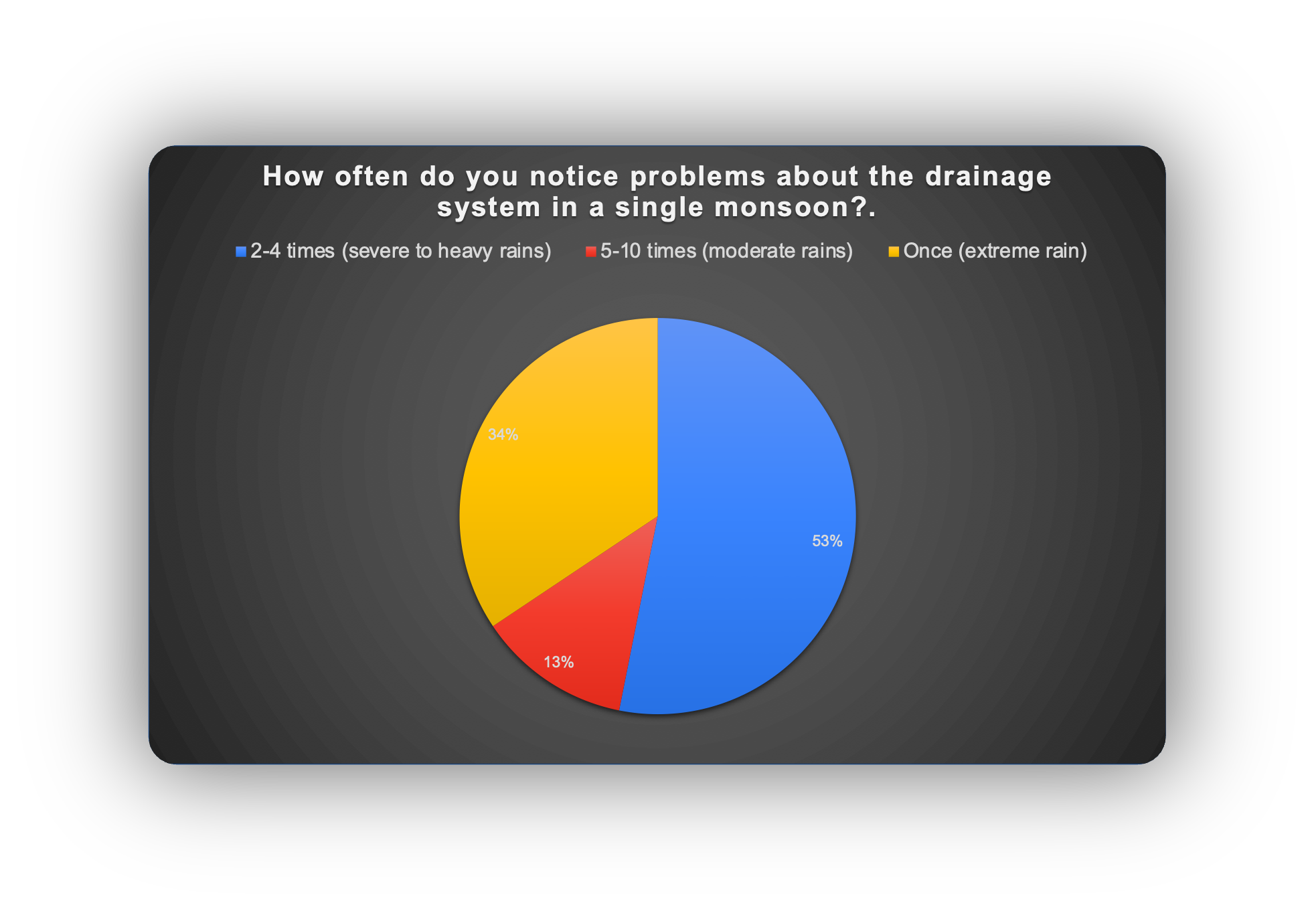
As seen in the first graph, the majority (66%) of the people that filled out our survey had experienced problems with the drainage system often, in the monsoon season of 2021. This further proves our rationale, that there is a critical problem with the drainage system of many parts of Mumbai.
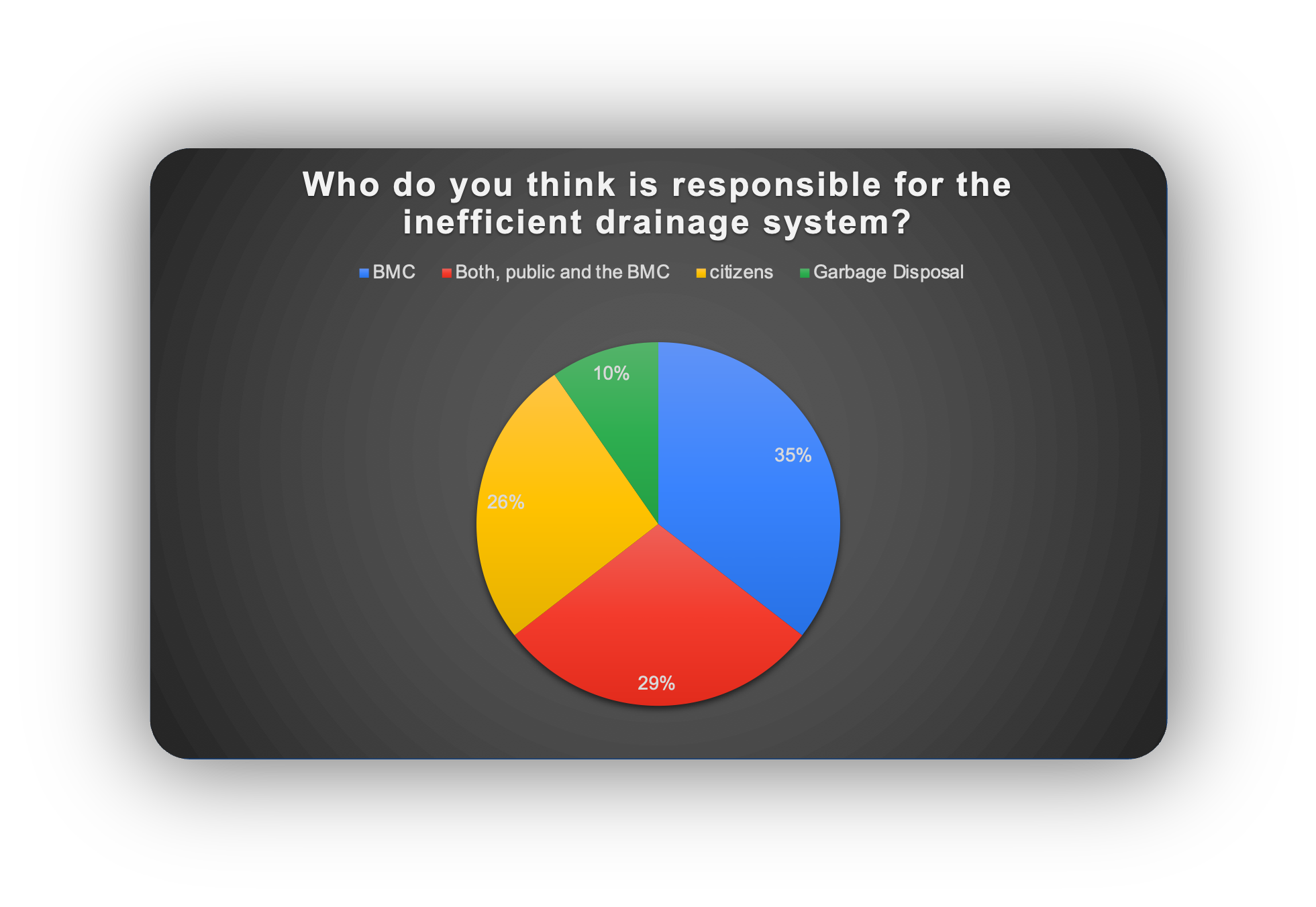
According to the people who have experienced inefficient drainage systems, the main hand for the reason of the drainage system’s inability to function properly goes to the BMC, which we believe plays a role in the inefficient drainage system.
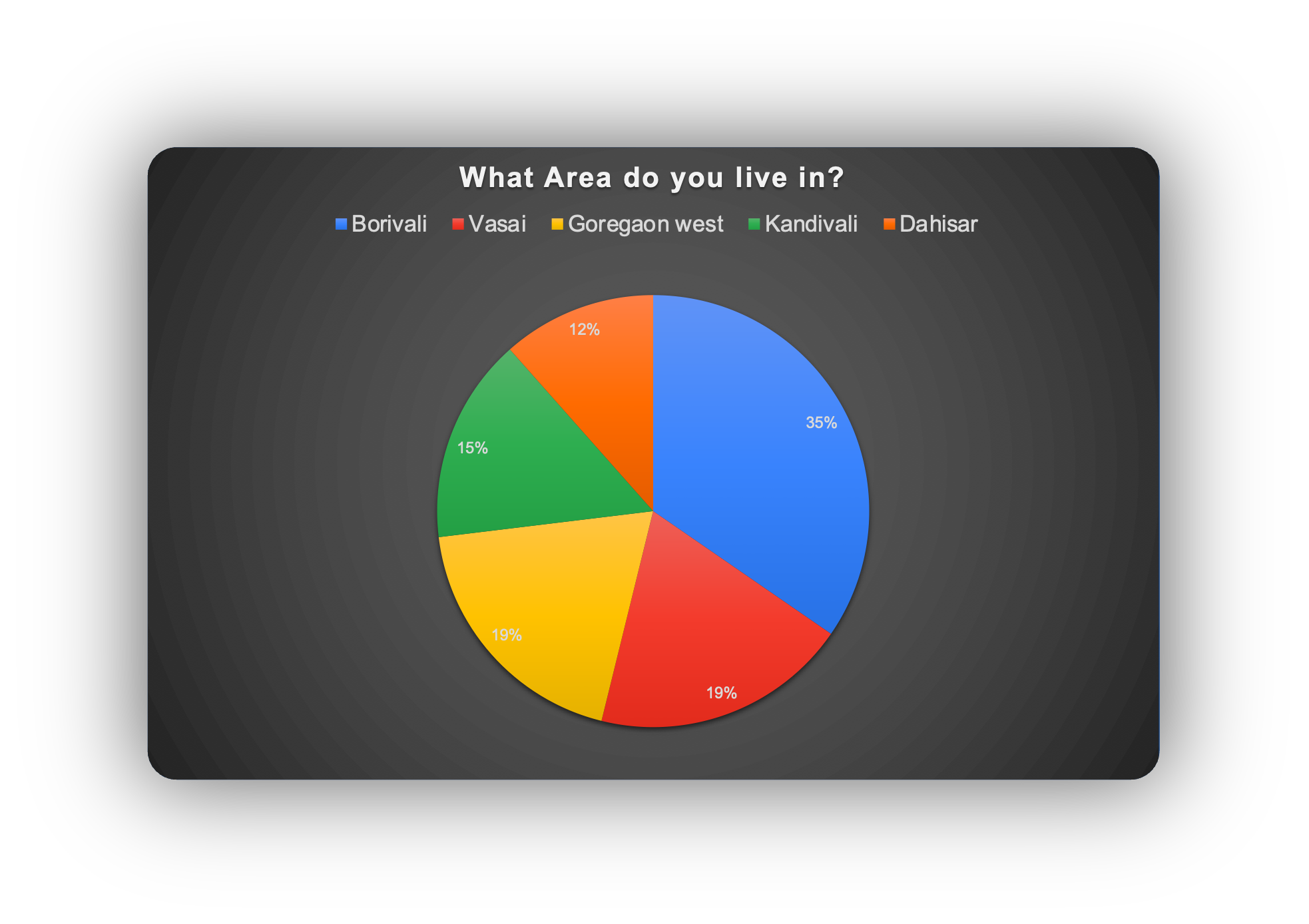
As our research paper is based only in the areas between Borivali and Kandivali, we have only taken in responses of people from those areas. Even though we haven’t included the information of the people living in Kandivali and Borivali, we can confirm that we got similar responses from people all over Mumbai.
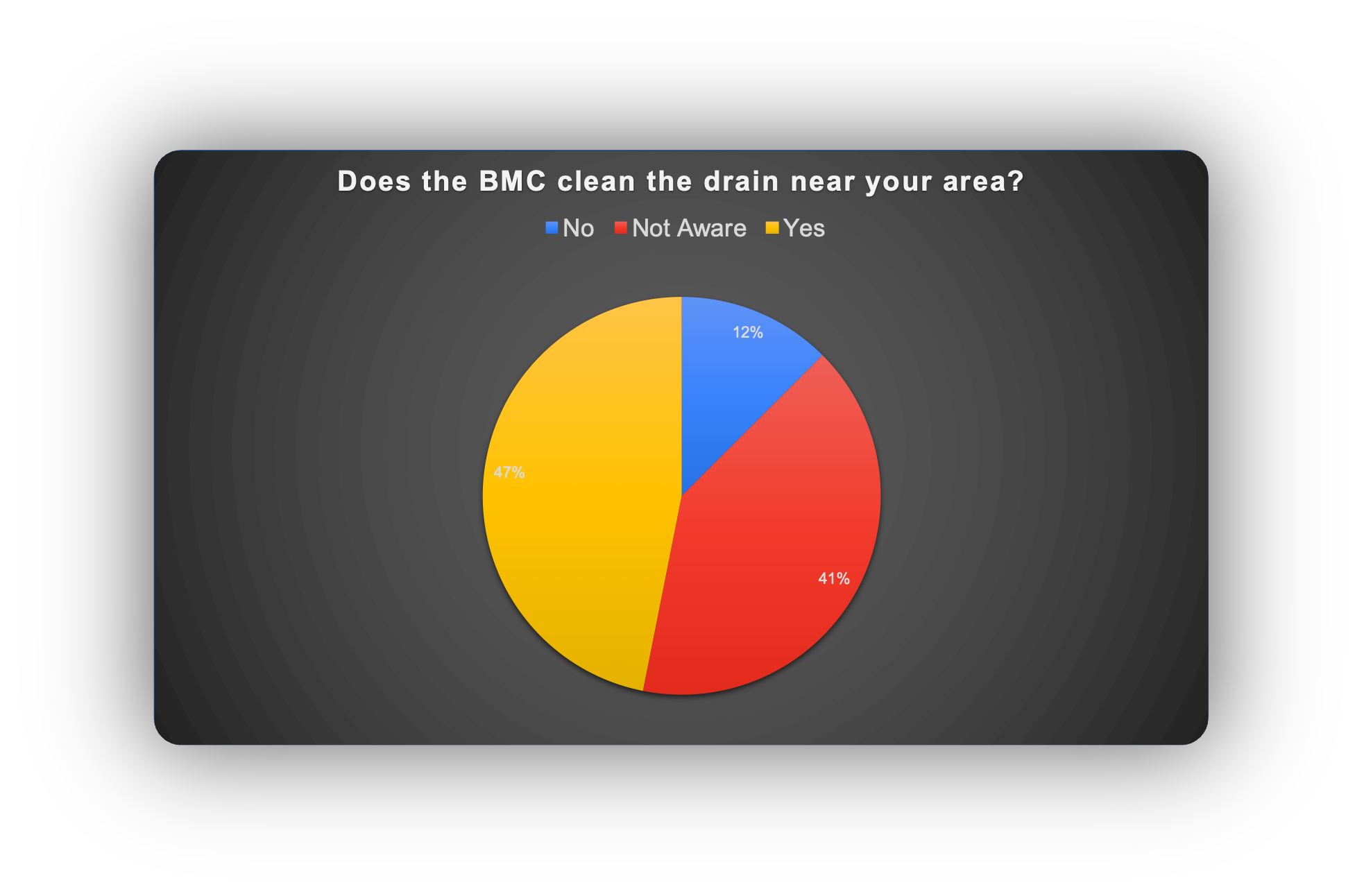
This graph lets the BMC off the hook for some responsibility for the inefficient drainage system because the majority of the people can confirm that the BMC cleans drains near their area. A thing to notice is the number of people not aware of the question asked. This goes on to show how unknown and underrated this problem is to the Mumbaikars.
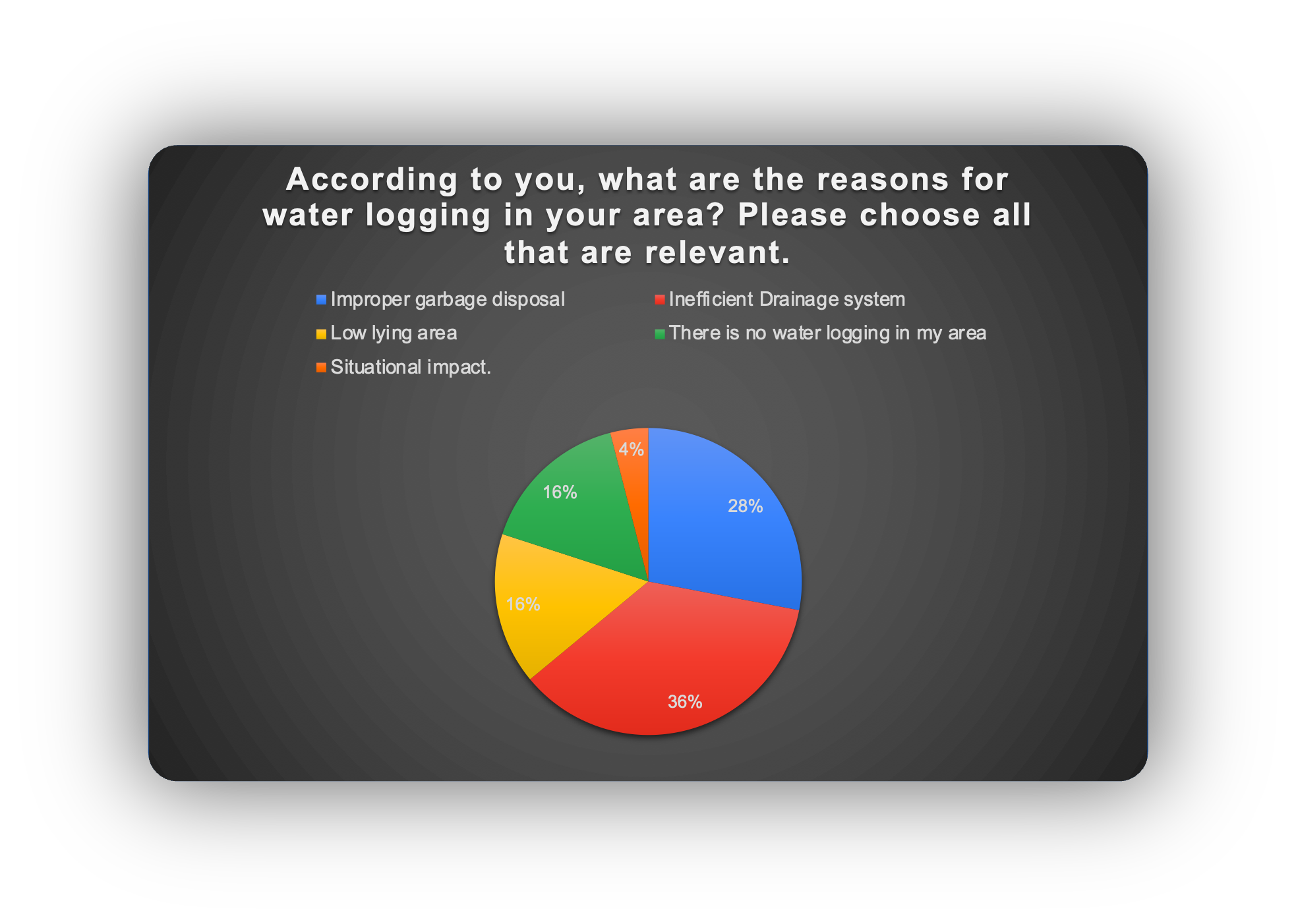
As expected, the majority of people agree with our rationale and the 16% who do not have water logging in their area are mainly near the parts where there is a scarcity of rain and floods. Our project does not even include the areas near the coast where the drainage system is the most needed.
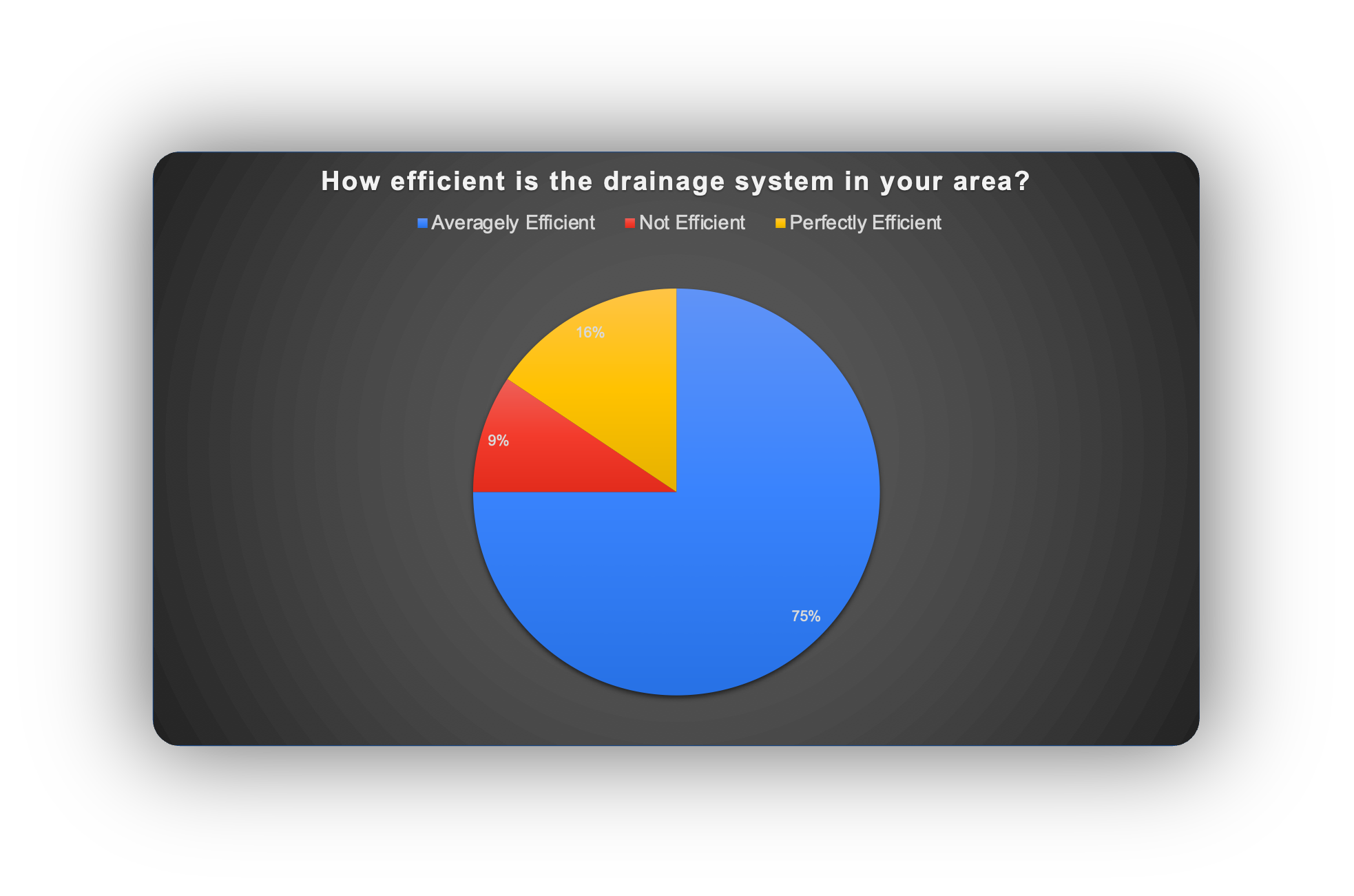
An astounding 84% of the people believe that there is some amount of problem with the design of the drainage system, which then further proves that our research question is extremely relevant.
Conclusion
As we embark on the major drainage problems that the World faces, it is blatantly obvious that we need some improvement on the drainage system all over the world, especially in Mumbai. Statistically, Mumbai is one of the top countries prone to flooding every monsoon, and NOTHING SIGNIFICANT has been done about it.
As the graphs of the google form perfectly represent, it is not only the effort of the BMC but the collective effort of the aware public and the diligent BMC to fix the long going problem of drainage issues of many parts of Mumbai.
We have tried our best to emphasize the fact that we care about our city, and we need to preserve it with our utmost efforts. As of now, it is just a research project, but with the public’s help, it might just be something much greater. A spark to a revolution.
